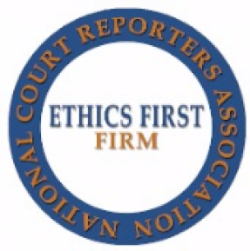Trial Presentation Innovative Technology for Engaging Courtroom Presentations
Trial Presentation Innovative Technology for Engaging Courtroom Presentations
Blog Article
Mesmerize the Jury: Crucial Components of a Powerful Trial Discussion
Necessary elements such as comprehending the audience, crafting a compelling story, and grasping spoken and non-verbal communication are critical parts of a reliable discussion. As these factors intertwine, they create a natural strategy that not only informs however additionally engages jurors on multiple degrees.

Recognizing Your Audience
Understanding your target market is an essential aspect of effective test discussion. An effective discussion depends upon the ability to realize the demographics, worths, and proneness of jurors. This comprehension notifies exactly how disagreements are mounted, evidence is offered, and sob stories are crafted, making sure that the message reverberates with the jurors on an individual degree.
Study suggests that jurors come from varied backgrounds and might have varying degrees of recognizing regarding legal process (trial presentation). Thus, it is important to stay clear of lawful jargon that might estrange or confuse them. Rather, using clear, relatable language fosters involvement and understanding. Additionally, comprehending the jurors' prospective prejudices and life experiences permits the trial speaker to prepare for objections and address issues proactively.
Effective test discussion also includes observing jurors' responses throughout the proceedings. Being in harmony with non-verbal hints can provide insight right into their involvement and receptiveness, permitting real-time changes in approach. Inevitably, a profound understanding of the target market not only enhances communication yet also constructs rapport, raising the probability of a beneficial end result. Involving with jurors as people rather than a collective system is vital in promoting a strong connection in the court.

Crafting a Compelling Narrative
Crafting a compelling narrative is crucial in assisting jurors through the intricacies of an instance. A well-structured story not just simplifies elaborate legal principles but additionally involves jurors on an emotional degree, making the info a lot more relatable and memorable.
To achieve this, lawyers ought to begin by identifying the core message they wish to share. This message must resonate with the jurors' values and experiences, promoting a connection that transcends mere truths. The narrative ought to unfold practically, providing events in a clear sequence to prevent confusion. This sequential method can assist jurors follow the progression of occasions, emphasizing reason and result.
Integrating human elements-- such as personal stories or anecdotes-- can better boost the narrative's impact. These aspects evoke compassion, permitting jurors to picture the effects of the instance on realities. Furthermore, using a consistent style throughout the presentation reinforces the main debate, making it easier for jurors to retain crucial points.
Ultimately, an engaging narrative changes a test discussion from a simple recitation of realities right into a persuasive tale that captivates the jury, encouraging them to ponder with both factor and emotion.
Making Use Of Visual Aids
Incorporating visual aids into a trial discussion can dramatically boost jurors' comprehension and retention of details. Aesthetic products such as graphes, representations, photos, and videos can change intricate legal principles and evidence into conveniently digestible styles. By involving numerous detects, these help allow jurors to envision the instance's crucial elements, making it easier for them to comply with along and understand intricate details.
Moreover, properly designed visual aids can highlight crucial points and emphasize relationships between different items of evidence. As an example, timelines can successfully highlight the sequence of events, while annotated images can make clear particular information appropriate to the situation. This not just help in understanding yet also strengthens the story presented by the attorney.
Overly complicated or chaotic visuals may bewilder jurors and detract from the message. Ultimately, reliable aesthetic interaction can be a powerful device in encouraging jurors and helping them get to informed verdicts.
Grasping Verbal Communication
Effective spoken communication is critical in a trial discussion, as it serves as the key ways via which attorneys convey their debates and link with jurors. Simpleness in language cultivates understanding and assists jurors comprehend more helpful hints intricate concerns presented throughout the trial.
Additionally, tone and pacing substantially impact how messages are gotten. A positive tone conveys authority, while suitable pacing allows jurors to take in details without feeling bewildered. Attorneys must additionally differ their singing inflections to stress essential points and maintain jurors' passion throughout the presentation.
Furthermore, the organization of spoken debates is vital. Structuring the narrative rationally and coherently aids jurors adhere to the attorney's line of thinking, making it much easier for them to retain critical details. Making use of influential techniques, such as narration, can likewise enhance the psychological vibration of the arguments offered, therefore creating a much more profound connection with jurors.
Inevitably, grasping verbal communication not only reinforces a lawyer's situation however likewise cultivates count on and connection with the jury, considerably boosting the opportunities of a beneficial verdict.

Engaging With Body Movement
Nonverbal interaction plays a vital role in trial discussions, often sharing messages that words alone can not reveal. Body language, encompassing motions, position, face expressions, and eye see call, considerably influences how jurors perceive the credibility and sincerity of the speaker. A confident stance, with shoulders back and an open stance, can impart trust, while closed-off body language may suggest defensiveness or unpredictability.

Face expressions must show the feelings related to the situation, strengthening the story existing. A genuine expression during an emotional moment can elicit compassion and reinforce the psychological charm. Eventually, grasping body language is necessary for effective test discussions, as it boosts verbal interaction and establishes an engaging existence that resonates with the court.
Conclusion
Finally, captivating the court necessitates a critical technique that encompasses recognizing the audience, crafting an engaging story, utilizing aesthetic help, grasping spoken communication, and engaging with body language. Each aspect plays an important duty in creating a powerful trial discussion that resonates this post with jurors on both psychological and intellectual degrees (trial presentation). By incorporating these components efficiently, attorneys can dramatically improve their capability to encourage and influence court decision-making
Report this page